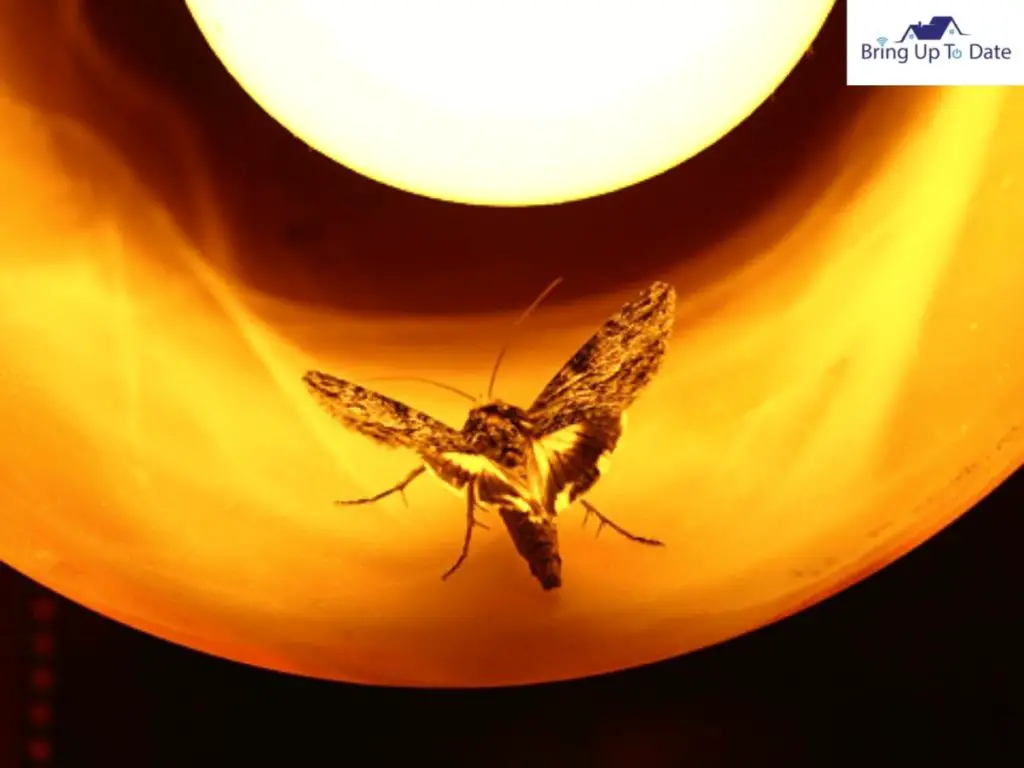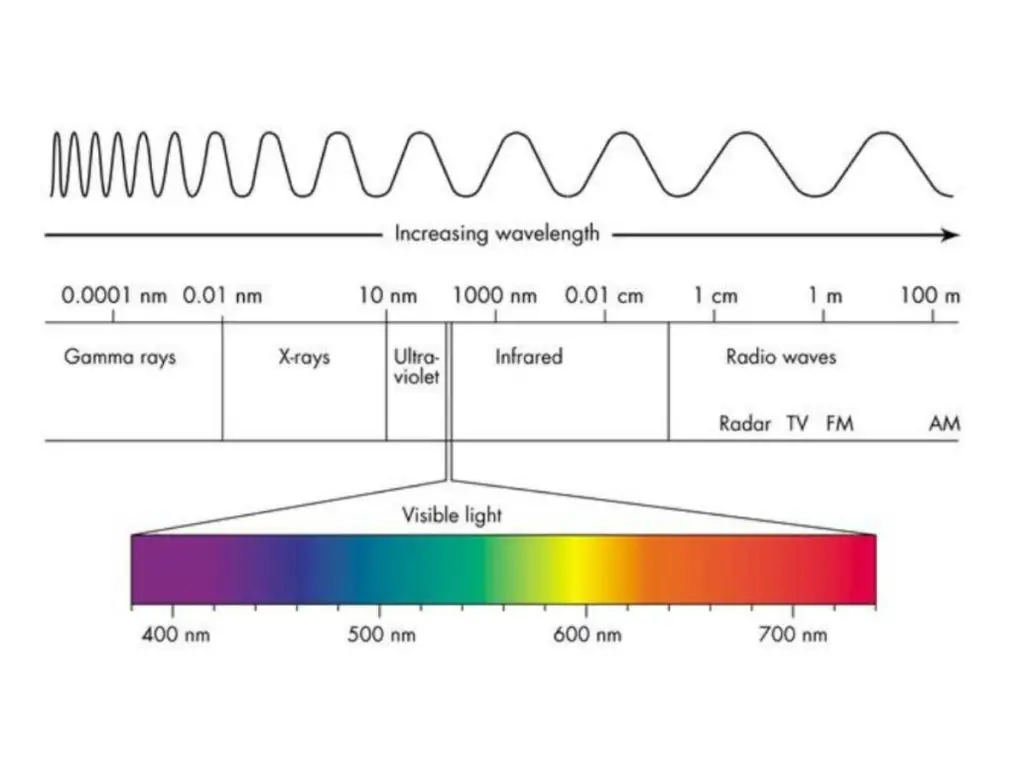Everyone wants to make the most of the summer season. There’s nothing like warm weather to get you outdoors. There is so much one can do in the summers, like running along the lake, sunbathing at the beach, and spending evenings on the balcony. Knowing my love for the outdoors, my partner planned a dinner date on the porch at his place. He decorated the area beautifully and illuminated the space with LED strip lights. Well, LED strip lights enhance the aura of a place like anything by adding a magical hygge touch. When I finally reached his place, I was delighted to see the fairy-tale dinner decor set up for me.
A few moments after sitting down to enjoy our wine and cheese, I noticed a couple of bugs around the light. We ignored them until an army of bugs intervened in our date. The moment my partner saw a spider on the table, he jumped in panic and asked me, ‘do LED lights attract spiders?’ As much as I wanted to say ‘no’ and continue the date night, I broke the truth to him by nodding in agreement. He instantly ran inside and asked me to pack up the stuff. A sad Smart Lighting Expert, hence, decided to write this article.
Bugs are indeed attracted to LED strip lights as they confuse the lights with natural light. However, LED lights attract the least amount of insects compared to other lights. You can try certain fixes given in the article to keep the insects away from your lights.
In this article, we will discuss why certain bugs get attracted to LED lights and what we can do to keep the bugs away.
Why Do LED Lights Attract Bugs?

If there’s one thing that has the potential to make a dull and somber room look modern and lively, it’s ambient lighting. Once relegated as novelty lighting, LED light strips are stealing the show these days. But with more people installing LED strip lights in their kitchens, bedrooms, living rooms, and outdoors, there are many queries like ‘do LED strip lights attract bugs?’ Many people have noticed an increased number of spiders in their homes and wonder if LED lights are the culprit.
Scientifically, phototaxis explains how insects respond to light. Insects like moths, wasps, flies, etc., move toward lights and are positively phototactic. On the other hand, insects like cockroaches, snails, watermelon bugs, etc., move away from the lights and are negatively phototactic. Phototactic insects move toward natural light because light acts as a guide to help them find the way and not collide with the predators. However, insects get confused when they come across an artificial light and keep circling the light source.
Even the heat produced by lights in the form of IR radiation attracts several bugs towards them.
Do All Colors Of Light Attract Bugs?

In my article ‘are LED lights bad for your eyes’, I discussed the effect of different colors of light on humans. Similarly, the color emitted by the light source affects whether or not bugs are attracted to it. Shorter wavelengths, i.e., blue or green light, are more visible to bugs. However, longer wavelengths, i.e., yellow, orange, or red light, are less visible to the bugs and thus, attract few of them. Insects also get attracted to the heat emitted by certain lights in the form of IR radiation.
The lights like CFL or halogen lights emitting UV radiation are more attractive to bugs. Since LED lights produce very little to no UV lights, they attract insects the least. However, in case you are using blue or green colored LED light strips, you may have a hard time with the insects. Since white LED lights also have a blue and green component in them, you will notice some insects hovering around them. If you are looking for what color light does not attract bugs, you should opt for red or yellow lights.
Which Insects Do LED Lights Attract?
The presence of insects inside the home is an annoyance that bothers most of us. I am yet to meet somebody who prefers an environment where insects buzz around. By nature, insects are attracted to light. Though LED lights attract the least amount of insects compared to other light sources because they produce significantly less heat than other lights, given below are some insects that get swooned away by the LED lights.
Flies, Mosquitoes, and Moths
Flies, mosquitos, and moths are the most common insects you see hovering around your LED strip lights, especially if installed outdoors. These insects are usually attracted to bright lights, but they confuse the LED strip lights with natural sunlight or moonlight. As a result, their navigation system messes up when they come close to the light source, and they circulate around the LED light in frustration.
Bees
However, it is not very common for bees to get attracted to LED strip lights; it is possible. At times, light triggers a phototactic response in bees, and as a result, they hover around the light source. Considering the importance of bees in sustaining life on the Earth by facilitating pollination, I strongly advise against killing them to get rid of them.
Spiders
Spiders, though not insects, can be commonly found around artificial light sources like LED strip lights. You can see spiders around your LED light because of the food chain. Spiders usually are not much attracted to the light. However, since spiders eat most bugs attracted to the light, you can see them following the insects as an intelligent move to get food.
Wasps and Hornets
Wasps and hornets get attracted to the LED strip lights because of other bugs that hover around the light. If you have spiders hanging around your LED strip light, understand the food chain and expect wasps and hornets as well, as they are fond of spiders as their meal.
Centipedes
Unfortunately, you may also find these pesky creatures hiding in the tiny spaces around your LED light strips for the same reason as spiders, wasps, and hornets- the food chain. Centipedes are pretty fond of spiders as their food and can be found following them even around LED strip lights.
How To Keep Bugs Away From LED Strip Lights?
Since we coexist with about 5.5 million species of insects, it is normal to have some insects hover around your LED light strips. However, I do understand that it can be annoying at times. In this section of the article, I am listing some common ways you can avoid these creatures and enjoy your moments in private without any invaders.
Here’s how
- Though pesticides and insecticides are harmful to the environment, using them is an easy way to avoid insects around your LED lights. You may simply spray a small quantity of these chemicals around your lights and keep these bugs at bay.
- A chemical-free alternative to the above method is adding an equal amount of water and vinegar in a bottle and spraying it around your lights. The way may not be as effective as using pesticides and insecticides but is environmentally friendly.
- You may spray peppermint oil around the LED light area to avoid insects.
- Placing sticky traps in the area where you expect spiders can get you rid of the creatures. They also work well with other insects.
- Flies can be captured using a fly trap. As the number of flies near the LED light decreases, the other insects feeding on them will not hover around your light.
FAQs
Q1. What color light does not attract bugs?
Answer – The light with a lesser wavelength attracts the least bugs. If you are looking for a light that does not attract bugs, you may opt for red or yellow lights.
Q2. Do TikTok led lights attract bugs?
Answer – Since most TikTok lights are cool white lights with a greater blue component, these lights attract several bugs.
Q3. Do green LED lights attract spiders?
Answer – The higher the wavelength of the light, the more it attracts bugs. Since the green component of visible light has a higher wavelength, it is likely for green LED lights to attract bugs, including spiders.
Conclusion
While LED strip lights accentuate the look of any space, it is common to see some insects surrounding the lights as insects are often attracted to them. Compared to halogen lights and CFL lights, LED lights attract the least bugs as they do not emit much heat in the form of IR radiation. Also, insects react differently to different colors of the visible light spectrum.
I hope the article must have helped you understand why insects get attracted to LED strip lights and how can you prevent them from hovering around your lights. If you have more questions about the topic, write to me in the comment section.

As an interior decorator, I am always looking to make homes beautiful but with minimalism. As a part of my occupation, I am always in touch with smart devices that makes your life easy, beautiful and comfortable. I take care of the smart living section for BringUptoDate.

2 thoughts on “Do LED Lights Attract Spiders & Other Bugs? Read To Find Out!”